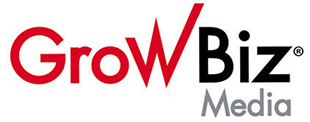March 2020 might feel like a million years ago, but in many ways, the corporate world is still catching up to the reality of the pandemic. Even three years in, many companies are still struggling to perfect their HR operations for the WFH/hybrid era.
Inevitably, cloud-based HR SaaS applications have caught on in a big way in recent years. Also known as cloud HR software, these subscription-based services have helped businesses to streamline their HR operations and beat back the chaos of a dispersed workforce.
Right now, the big debate in many offices is whether to go with an all-in-one HR SaaS solution or to invest in a number of pure-play specialized HR SaaS tools. To explain the distinction: all-in-one means a single centralized platform, pure-play means a dozen separate tools or more.
For very large companies whose HR departments contain a number of specialized roles, pure-play tools can serve a valuable function. For small-and medium-sized companies, though—whose resources are stretched thin as it is—an integrated solution will likely be the better option.
To explain why, let’s look at the issue through the lens of a single tool: specifically, employee time tracking.
The Benefits of Employee Time Tracking: A Quick Guide
We all know what employee time tracking is—but the many benefits employers can draw from it might be less understood.
To begin with, there’s the regulatory aspect—per the Fair Labor Standards Act, time tracking is mandatory on the part of businesses. Failure to keep accurate records of how much employees are working can result in steep fines and other regulatory actions.
That said, there are countless other benefits to staying on top of how much each employee is working each day. By drilling into that data, employers can better-assess how their employees are spending their time, and make decisions accordingly.
This is where employee time tracking software comes in. Yes, employers can have their employees track this information in Excel—but after any appreciable amount of time, a time tracking spreadsheet is likely to become an unmanageable mess, not to mention a headache for the employees themselves, who might chafe at being made to use such outdated technology.
The benefits of dedicated employee time tracking software, on the other hand, are manifold, including accurate time recording, reduced costs (i.e., less time theft or wage theft), fairness and transparency, security, and—perhaps most important in this increasingly hybrid era—enhanced oversight of your remote workers.
On the employee end, time tracking can be simple with the right service—all the employee has to do is log into the platform, clock in when they start working, and clock out when they stop (or, alternately, manually input their hours after the fact).
On the employer end, an ideal time tracking solution will possess a number of important qualities, among them a digital point of entry that automatically records the precise time employees start and end shifts, mobile accessibility, and analytic features.
Why Integration Matters
Certainly, an employee time tracking tool can be useful in isolation. But in aggregate—combined with some of the other streams of data that businesses generate every day—the data provided by an employee time tracking function can serve as an extremely valuable source of actionable insights. Buried within all of that information are patterns and trends which businesses can use to better-allocate their resources, restrategize initiatives that aren’t working and (if necessary) make difficult personnel decisions.
Of course, plenty of specialized tools can provide this kind of granular information, and many of them permit at least a limited degree of integration with other HR tools. But fundamentally, the most effective way to get a big-picture sense of how your company is functioning is to have your employee time tracker serve as one node of a larger system, one that is constantly synthesizing and generating actionable insights.
By combining time tracking data with, for instance, shift management and expense management, businesses can unlock new levels of insight into their day-to-day affairs. They can run custom HR reports that contain unprecedentedly granular information. They can compare expenditures, sorting by expense type or employee. They can also, of course, perform all the other functions of a typical employee time tracker, like tracking employee hours, and clocked overtimes.
Fundamentally, what integrated time tracking technology permits is a deeper sense of what you’re paying for. What’s your ROI per project or employee? Are there aspects of your business that are draining time without generating results? Automatic answers to questions like these can prevent businesses from losing weeks or months on dead-end initiatives, while ensuring that everyone at a given company is pulling their weight.
The pandemic and the rise of WFH have provided the corporate world with an opportunity to radically overhaul their sometimes-outmoded HR processes and embrace streamlined, optimized, insight-rich cloud alternatives. Specialized tools can absolutely be helpful in this respect, but when it comes to saving money—and gaining a deeper understanding of your company’s operations—centralized platforms are really the only option.
Peter Santis is Head of North America for Factorial.



